Italian Olive Oil Producers Enjoy the Best Harvest in Years!
Presenting a Trio of Exclusive Club Selections for Your Table
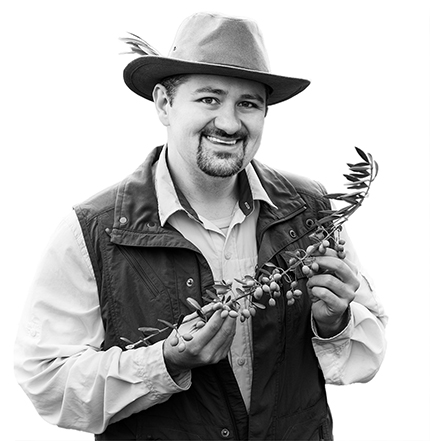
- A nearly ideal growing season, unprecedented in recent years, set the stage for a beautiful collaboration between the Fresh-Pressed Olive Oil Club and award-winning artisanal producers from family farms in Tuscany, Abruzzo, and Sicily.
- Available nowhere else, these outstanding extra virgin olive oils will bring joy to your cold-weather meals.
- All were rushed to the US by jet to preserve their intoxicating aromas, complex flavors, and healthful polyphenols.
- As always, all have been certified by an independent lab to be 100 percent extra virgin.
How best to frame the story of my quest to bring you the world’s best and freshest olive oil in this, the last quarter of the year? Borrowing from the profound introductory paragraph of Charles Dickens’ novel, A Tale of Two Cities, “It was the best of times, it was the worst of times…”
The good news is that this set is one of the most stunning trios of Italian olive oils I’ve assembled in at least a decade. For the family-owned farms that produced these just-pressed oils, 2020 was anno buonissimo! The bad news—for me personally, anyway—was that I was unable to physically be there for this epic harvest.
This was very distressing to me—a cruel irony, as Italy has long been one of my favorite olive oil destinations for many reasons. Chief among them is Italy’s intimate relationship with the world’s most important evergreen, Olea europaea. It has been going strong for thousands of years and plays such an important role in Italy’s unique culture. The country is home to more than 550 varieties of olives, most of which thrive nowhere else; many of them have made custom-blending oils a real joy over the years.
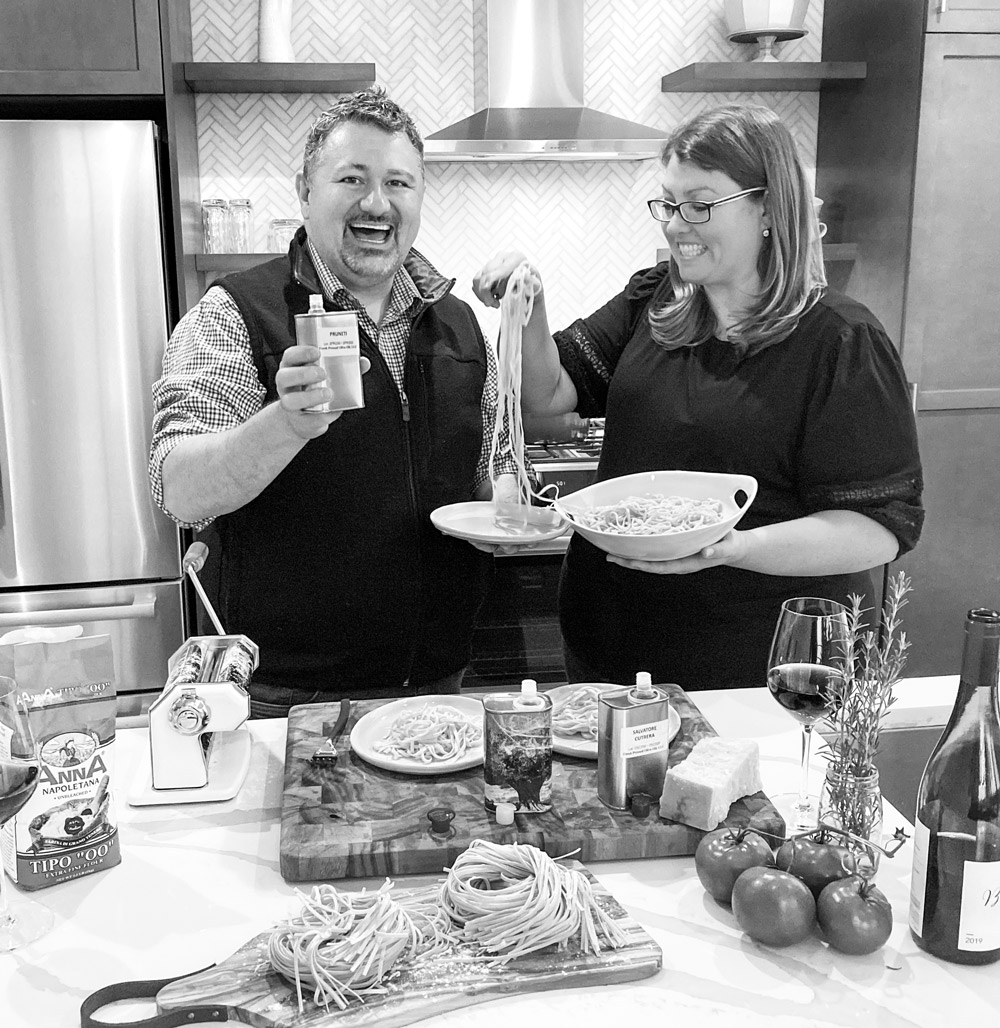
An Especially Sweet Victory
On the other hand, I was thrilled for the olive farmers who, despite the hardships imposed by the coronavirus, enjoyed nearly ideal growing conditions all season long: a spring that treated flowering trees tenderly; a warm summer that discouraged attacks by pests; well-timed rains; and a cool but frost-free fall that accommodated an early harvest (always my preference). They needed and deserved that bit of extraordinary luck after the hardships many have endured in previous harvest seasons.
Earlier this year, Italy was one of the first Western countries to restrict travel during the pandemic. So it was clear months ago that my annual visit to Italy was not in the cards. Fortunately, I had two quarters’ worth of experience finding premium extra virgin olive oils in Chile and Australia by relying on dependable longtime contacts, residents of those countries who know how exacting and meticulous I am.
Introducing My “A” Team
As the Italian harvest approached, I was in the best position I’d been in in months, considering international travel from the US was impossible. From Rome, I was being advised by Duccio Morozzo della Rocca, a world-famous olive oil expert and master miller I’ve collaborated with for 10 years. Poised to join him, once the harvest began, was one of my dearest friends, Tjeerd Belien, a Dutch citizen and an intrepid world traveler. (His first name is pronounced “cheered.”) We have known each other since 1996. Not only is he the photographer whose work always illustrates the pages of the Pressing Report, but he also speaks five languages and is an accomplished olive oil taster, a logistical genius, and the best person on the planet for channeling me in the field.
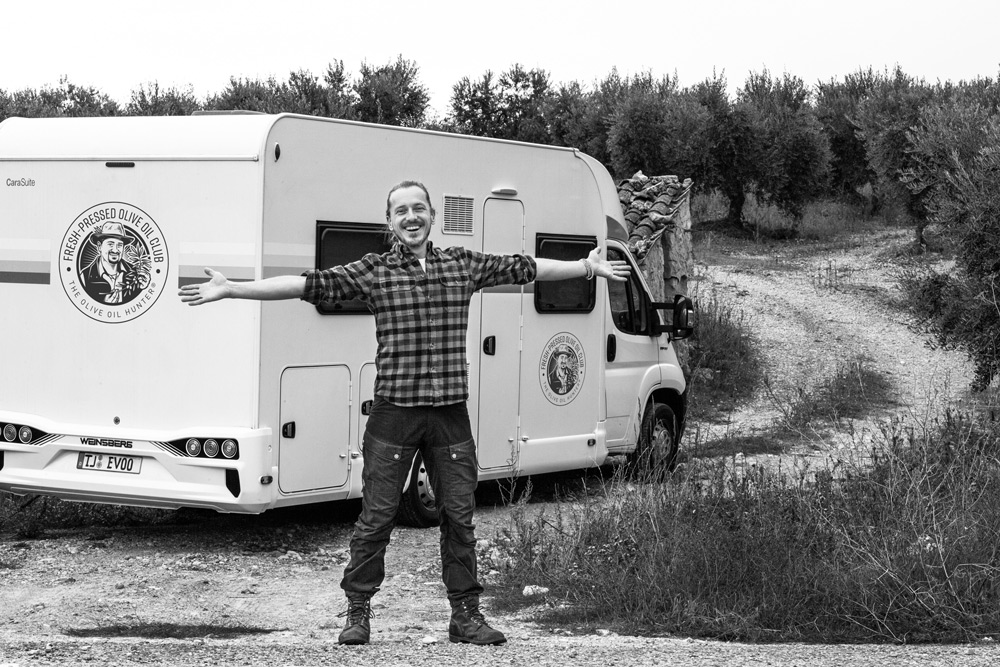
Plus, he can drive anything—trucks, cars, campers, etc.—and on the left side of the road, too, a skill that comes in very handy when we’re visiting olive producers in the Australian Outback. After renting an RV in Germany (see photo above), Tjeerd stocked up on groceries (many European hotels and restaurants are closed during the pandemic) and as planned, rendezvoused with Duccio in Italy. Duccio had already identified the season’s most promising producers—all families with whom we have long and successful working relationships, including the Pruneti brothers in Tuscany, the Di Mercurio family in Abruzzo, and Salvatore Cutrera in Sicily. These names will be familiar to longtime Club members who have previously enjoyed their outstanding olive oils.
The Best Italian Olive Oils in a Decade, Says Expert
We kept in very close touch, exchanging opinions on samples and blends and handling the myriad details necessary to get these precious oils to your door. Tjeerd created a vivid “you are there” connection for me with phone calls, emails, photos, and video recordings, as he knows how dearly I love the hunt for Italy’s “liquid gold.”
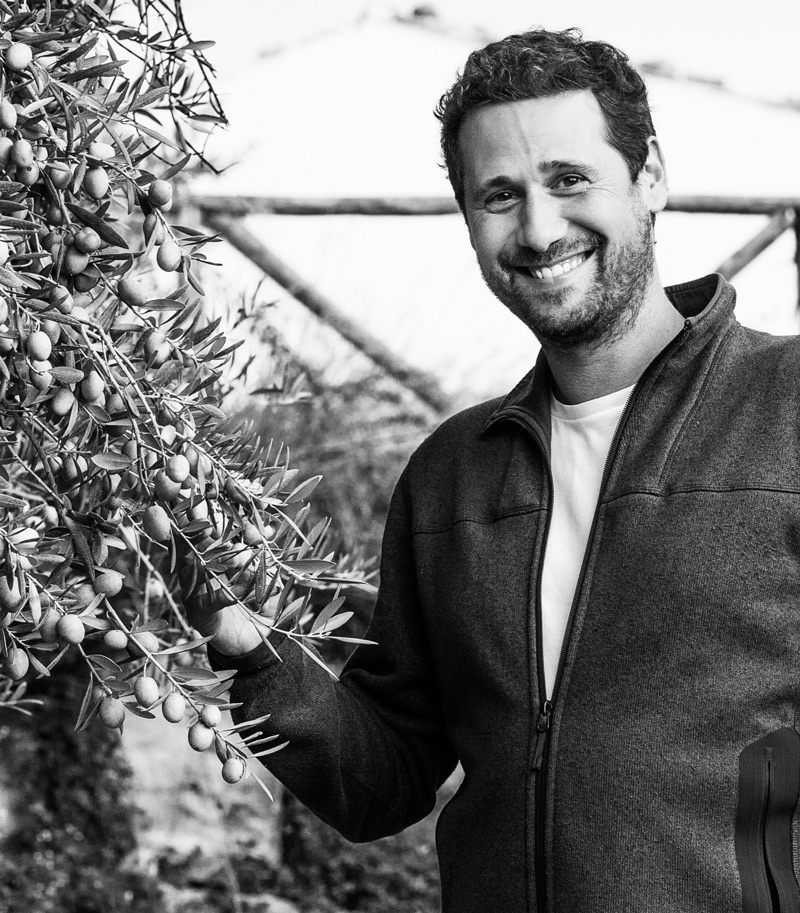
Duccio continues to rave about the oils—some of the best he’s tasted in his professional career, he says. I have to agree. This trio of polyphenol-rich olive oils is incredibly well-balanced, with exquisitely long finishes and parity between fruitiness, spiciness, and bitterness. I couldn’t be prouder of these exclusive creations, or of the extraordinary effort exerted by so many people to put them in your hands.
These ravishing EVOOs will be amazing additions to your winter kitchen. Their robust healthfulness and food friendly characteristics will delight and astound you. As always, I’ve included Italian-inspired recipes to show off their finest qualities, as well as detailed tasting notes and recommended food pairings.
Happy drizzling!

T. J. Robinson
The Olive Oil Hunter®
This Quarter’s First Selection
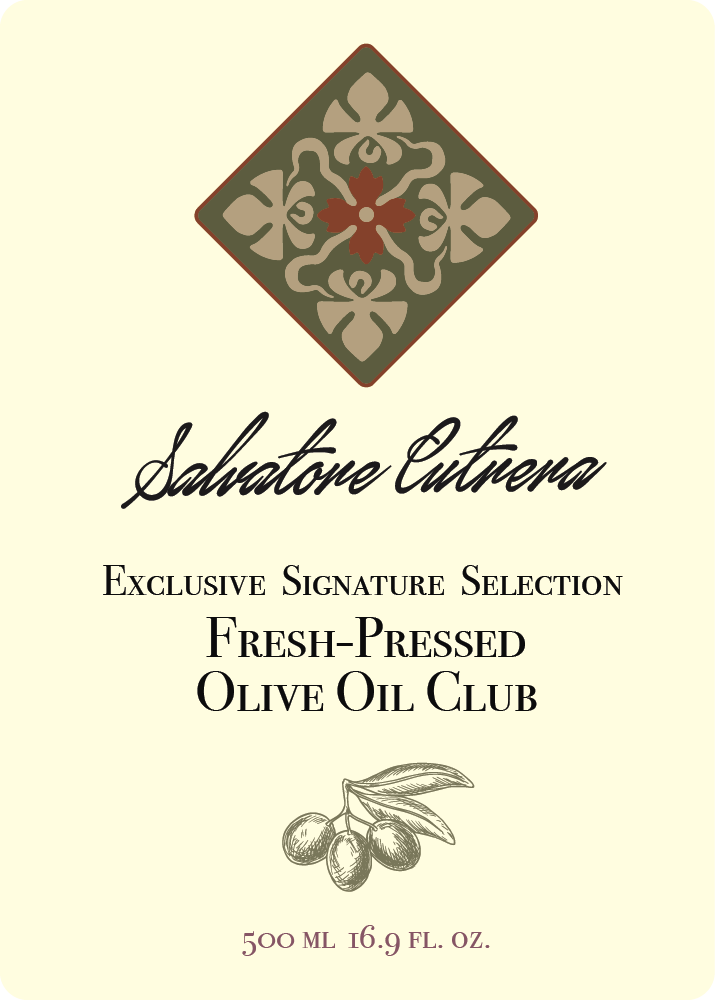
The Olive Oil Hunter was born in Sicily. Figuratively speaking, that is—T. J. Robinson was born in North Carolina, but my love of fresh-pressed olive oil and my mission to bring it to America year-round started back in 2003 on the rocky island wedged between the toe of the Italian boot and the coast of North Africa. At a Sicilian harvest celebration, someone handed me a small glass of indescribably fresh, green, life-affirming olio nuovo—“new oil”—and my life changed forever.
Native Sicilian Salvatore Cutrera takes it a dimension further: “I was born in an olive mill,” he says. “This is my habitat, like the lion in the savannah.” Salvatore and I got to know each other three seasons ago, in 2017. In our initial encounters, I had the sense I was being sized up—Is this guy the real deal?—but my discerning palate won him over, and Salvatore excitedly shared with me (and you, my lucky Club members!) what he calls his “secret stash,” pressed from his very finest olives, reserved for only those who can truly appreciate it.
Salvatore and I are thrilled to feature an exclusive Cutrera blend as a Club selection this year. “It was a perfect season,” he announced. “In 20 years we have not had such a beautiful season.” While Italy is home to more than 550 olive varieties, the groves at Frantoi Cutrera, intriguingly, are devoted to two: Tonda Iblea and Nocellara del Belice, both of which are popularly served as table olives. (I adore great olive oils pressed from table olives, as the fruit is cultivated for its intensity of flavor.)
Duccio described the choreographed “craziness” at the Cutrera mill during the harvest as “well organized, military-Sicilian style,” running 20 hours a day, with trucks laden with bins of just-picked olives arriving nonstop from the groves. “A beehive,” evoked Tjeerd. “Everyone has a role.”
Salvatore explained his uncanny ability to step from his office into the fever-pitched activity of the mill, always intuiting where he is needed, and for what. “It’s not just tasting and smelling that makes you a great miller—perfect managing involves using all the senses. When you are inside the mill you see, smell, hear, touch. You listen to the rhythm and noise of the equipment, and you know if something must be done.”
The intense productivity of the mill is made possible by the extended—and extensive—Cutrera family. Salvatore’s two sisters and both his brothers-in-law are involved in the business, as are some of their children, totaling at least 12 of the employees. They are always looking forward, striving for perfection.
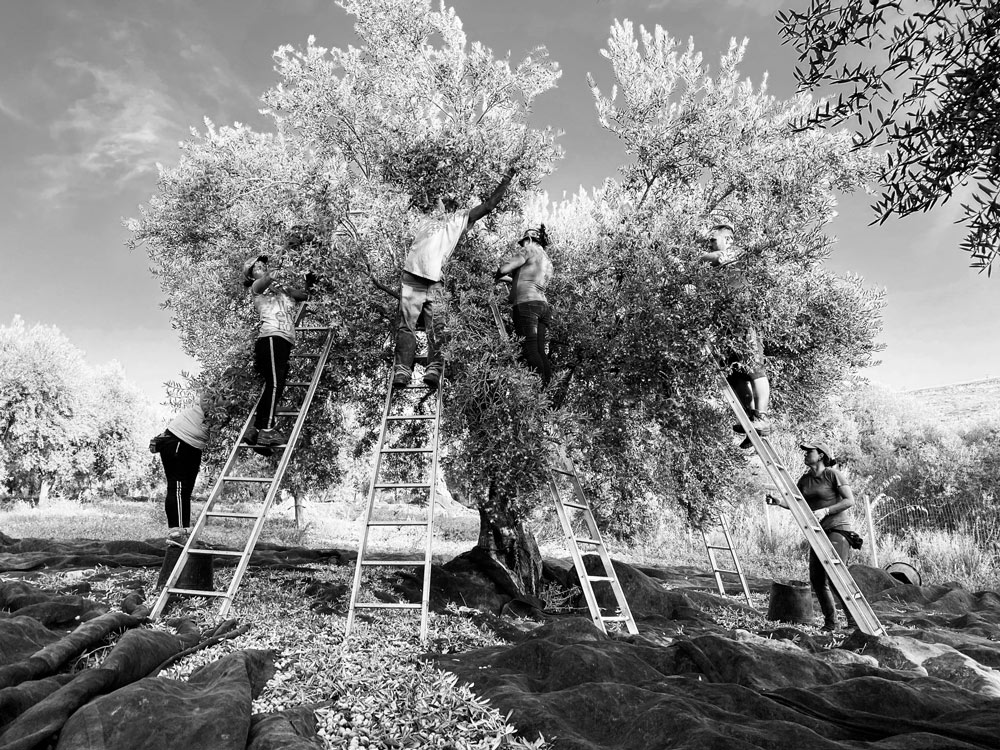
Last season the mill implemented a heating exchange system, in which a long stretch of tubing allows the olive paste to be cooled to an exact temperature, reducing the time and heat exposure, increasing the aromas, and allowing for better oils.
“Next year,” Salvatore promised, “you will visit my new facility.” In the ambitious, groundbreaking project, connecting corridors of glass will allow all production areas to be visible to each other and to visitors, promoting olive oil education by drawing locals and tourists alike to observe the process. Seventy-five huge olive trees encircle the structure. All the state-of-the-art equipment and holding tanks will be brand-new, and Frantoi Cutrera plans to premiere a technique for transporting each just-pressed oil directly to its corresponding storage tank, under temperature-controlled conditions, with no oxygen exposure. Among attempts to evoke the scale and importance of the new mill, I think Duccio described it best: “It will be a cathedral of olive oil.”
I can’t wait for you to taste this exquisite blend—it exemplifies all the sensuous characteristics of Tonda Iblea, fortified by Nocellara del Belice. Even though I have worked with these two varietals in the past, this particular blend is one of a kind. Every year is different; as Salvatore observed, “You must put the season in context in order to understand how to work with the olives to produce the very finest oils.”
He then returned thoughtfully to the idea of craziness, opining that to create something truly great, one needs to have a little touch of insanity. “I see the same craziness in T. J., the passion we share.”
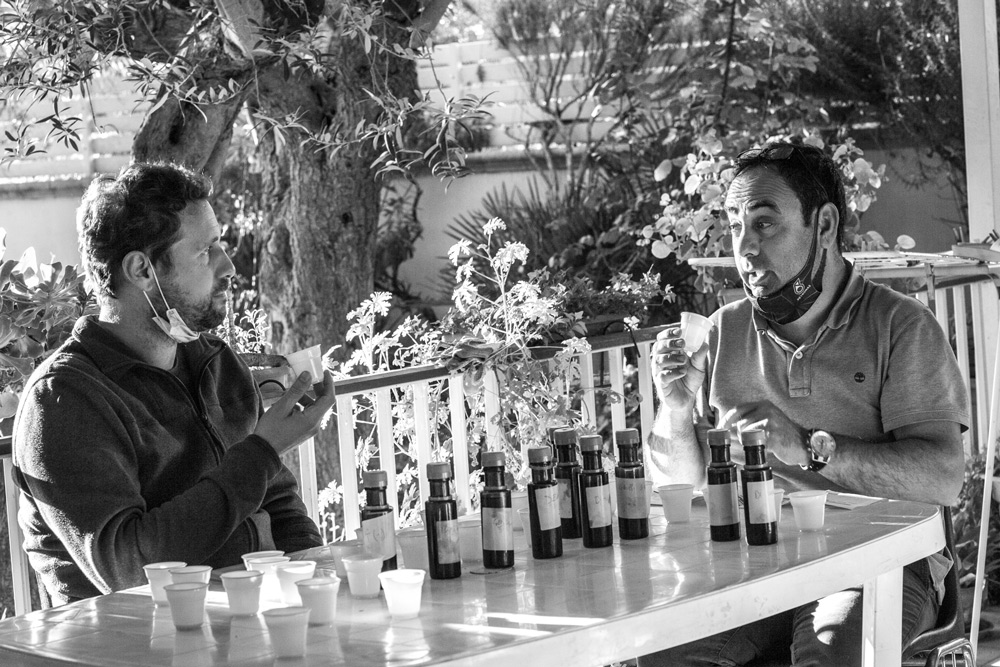
Impressions and Recommended Food Pairings
Green in the glass and on the nose, this intoxicating olive oil is perfumed with the scents of tomato, tomato leaf, fresh basil and mint, green apple, baby fennel, celery, and walnuts, punctuated with the spiciness of arugula and white pepper. In the mouth, my tasters detected fresh-cut grass, green tomato, and minerally baby spinach with Belgian endive-like bitterness. We were captivated by the nuttiness of Nocellara del Belice and the tomato-ey notes delivered by Tonda Iblea.( Both varietals are natives of Sicily.) Extremely well-balanced with a warm, lingering finish.
This oil would be perfetto with fresh bread; mild white fish, such as sole or cod; lobster, shrimp, or crabmeat; chicken; risotto, polenta, and other grains; white beans; squash; salads featuring fruit and/or nuts; crudités; tomato bruschetta; pizza; pasta; potatoes; roasted pears with pistachios; mild cheeses; or a variety of soups, such as chickpea, tomato, minestrone, potato, or cauliflower.
This Quarter’s Second Selection

For the past two years, veteran Club members have received a phenomenal extra virgin olive oil pressed during the Italian harvest called Frantoio Hermes. The name, as fans of Greek and Roman mythology will recognize, was a play on the producer’s surname, Di Mercurio.
Somehow, this diminutive 60-acre family farm in rural Abruzzo snagged the attention of the high-end Paris fashion house founded in 1837, also known as Hermes, which flexed its legal muscle to force a name change. Thus, the olive oil brand that delighted Club members in 2018 and 2019 is now known as Frantoio Mercurius.
(Sometimes, Goliath wins.)
But you win, too, dear Club member, as the oil pressed during the current harvest by this small boutique farm is once again—for the third year in a row—outstanding. (Usually, olive trees require at least one season to recoup their vigor.) The name may have changed, but this family’s unwavering commitment to quality continues to impress. Among the many awards Claudio Di Mercurio and his team have won in a mere 10 years is the much-coveted “Frantoio dell’ Anno” (Mill of the Year) by the prestigious Italian food and wine empire known as Gambero Rosso.
Almost as precious to Claudio are the compliments he’s received from my appreciative Club members. He grins widely when he recalls them. He is still incredulous that the extra virgin olive oils he and his family produce from Dritta olives, an early ripening varietal unique to Abruzzo, are on the tables of olive oil-savvy Americans like yourself.
Dritta is one of several hundred Italian olive cultivars. The name translates to “sweet,” “dependable,” or “trustworthy.” As an adjective, the word dritta can be applied to people as well—certainly, it’s appropriate for the sweet and trustworthy Di Mercurio family.
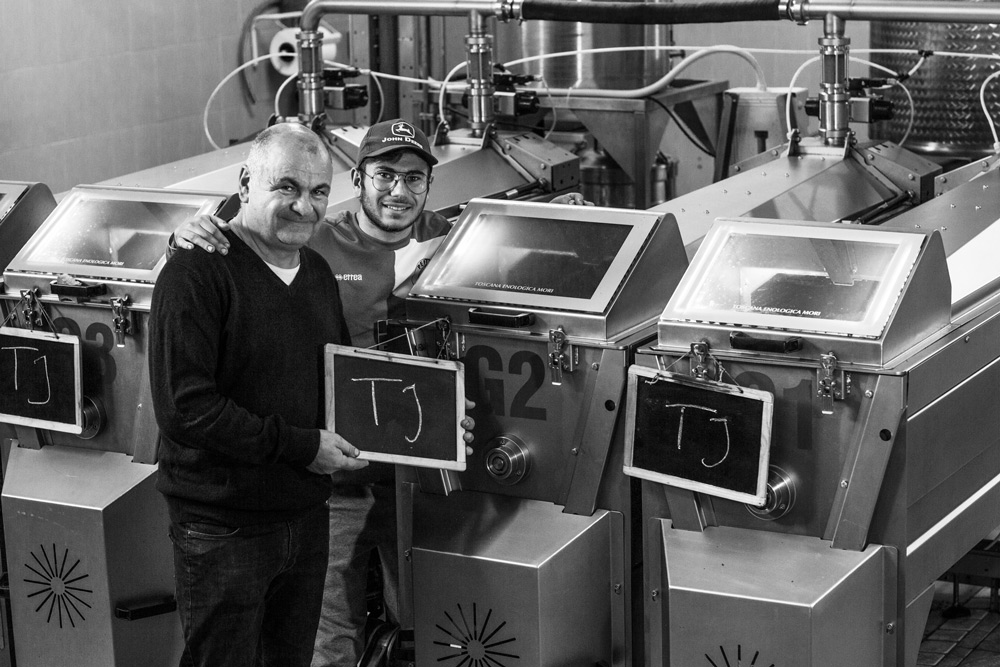
While I savored the many photos, videos, and olive oil samples Tjeerd and Duccio sent me from the farm, I felt wistful that I couldn’t be there in person to savor the first drops of just-pressed olive oil on the family’s warm-from-the-oven bread, steaming soup, garden-fresh salads and vegetables, cured meats, and more. Nostalgia overwhelmed me when I saw a recording of one of Claudio’s sisters stirring pasta into a huge pot of boiling water over an outdoor propane burner fashioned from a tin wash tub. I remembered so well the family’s warm hospitality from my first meals at their table, and later, the comfortable and informal way we related at the end of long days in the groves or at the mill.
Weariness, of course, is much easier to cope with when the harvest is as sensational as this one was in both quality and quantity. The entire season, Claudio noted happily, was almost picture-perfect. No curveballs from Mother Nature! Cooler temperatures in the spring and early summer made for good flowering (if there are too many buds, the tree’s energy can be sapped as the fruit develops) and were inhospitable to the pests that sometimes threaten the crop. Well-timed fall rains helped the fruit mature, as did optimum differentials between daytime and nighttime temperatures. (The latter is critical for the development of intoxicating olive oil aromas.)
Claudio, an electrical engineer by training (his wife, Olga, is a medical doctor), relentlessly searches for ways to improve the quality of the oils the family produces. This year, he invested in a device that produces inert nitrogen gas, which is used by the world’s best olive oil producers to displace any oxygen that might come into contact with the fresh-pressed oils. Nitrogen inhibits premature oxidation and protects healthful polyphenols.
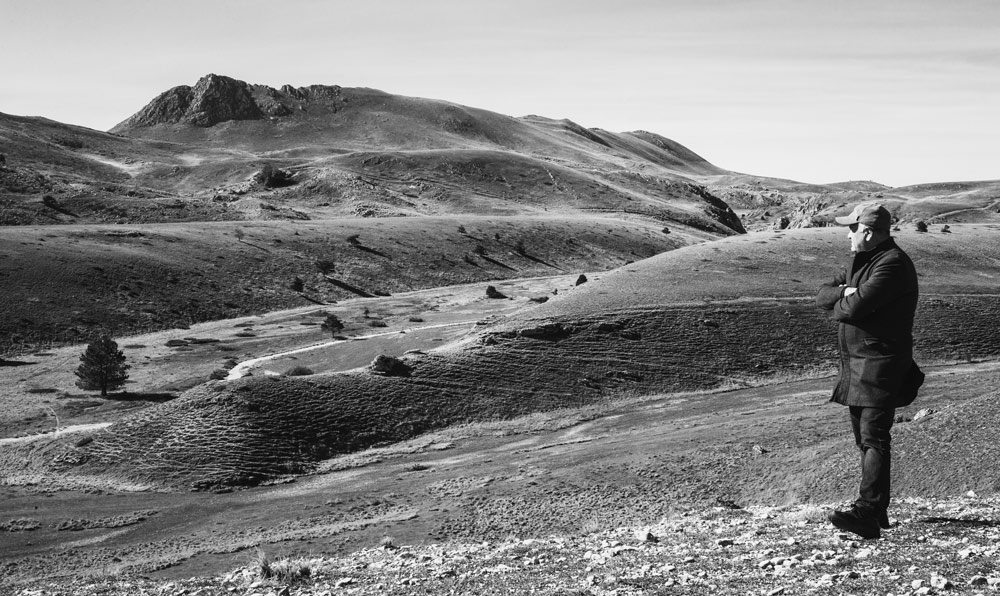
In another new development, the Di Mercurios’ 19-year-old son, Antonio, has taken a year off from his schooling to learn the olive oil business from the ground up, a source of great pride for his parents.
If you are unfamiliar with it, Abruzzo is a region in South-Central Italy about 60 miles east of Rome. The Di Mercurio farm, its beautiful hills studded with olive trees, is located near the Adriatic Sea and the ancient city of Penne. Just over the ridge is an otherworldly area resembling the American West where American-made films, such as “spaghetti Westerns,” were shot in the 1960s and 70s. (See the photo above.)
I can’t wait for you to taste this exclusive and very special olive oil, which is available only to members of the Fresh-Pressed Olive Oil Club. I promise it will be a singular experience.
Impressions and Recommended Food Pairings
For the third consecutive year, this personable oil, pressed from rare Dritta olives, stays mostly in character. Herbal and grassy, it’s evocative on the nose of almonds, artichokes, green bananas, golden apples, cinnamon, mint, red peppers, and chopped winter greens. Abundant polyphenols give it a Szechuan peppercorn-like spiciness in the mouth, tempered with the flavors of arugula, radicchio, artichoke, hazelnuts, celery, and lime zest. Beautifully calibrated. Anticipate a pleasant and protracted finish.
This Quarter’s Third Selection
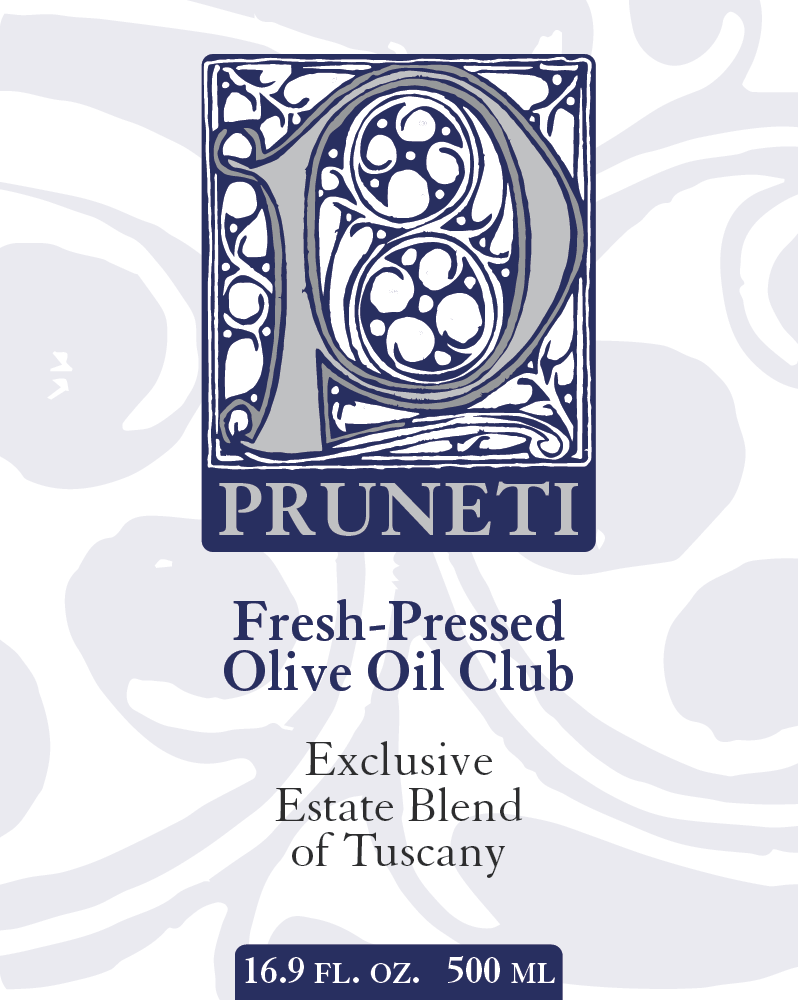
When you walk into Frantoio Pruneti, the air is alive and tingling with peppery, spicy, pungent polyphenols and the scent of fresh, green olive oil. I fervently missed that olfactory experience this season; if I close my eyes and imagine standing in that space I can smell the greenness, and my throat practically tickles from the oleocanthal in the olives.
Brothers Gionni and Paolo Pruneti are fourth-generation olive oil producers with gold-medal-winning, diversified groves located sixty miles from Siena. Their extra virgin olive oils consistently reap the most coveted honors, with at least four appearances on the Top 20 list of Flos Olei, the connoisseur’s guide to the world’s best olive oils. On my very first visit, in 2012, I was so smitten that I presented one of their brilliant oils as a Club selection, and we have collaborated a number of times since. The impeccably maintained groves, comprising more than 30,000 trees, carpet the hills in and around the town of San Polo in Chianti, along the storied wine route between Siena and Florence.
Gionni shared exuberant news early: “This is going to be a great season!” For the first time in fifteen years, the Pruneti groves enjoyed normal weather (or, rather, what used to be considered normal weather)—a hot summer, with enough rain to create plump fruit, but not too much moisture; and a pleasingly cool fall. This provided for an early harvest—my timing preference for maximizing the complex flavors and plentiful perfumes in the resulting oils—and for a manageable, standard workday for the harvest team. (The hotter temperatures of the past several years have dictated that harvests start before dawn and end before midday in order to protect the picked fruit from the blistering heat.)
I can’t lie to you—I was deeply disappointed to miss the best Tuscan harvest in more than a decade. But I couldn’t ask for a better virtual reality experience than via my two most trusted colleagues, Tjeerd Belien and Duccio Morozzo, who served as my nose, palate, eyes, and ears in the Remote Italian Olive Oil Hunt of 2020.
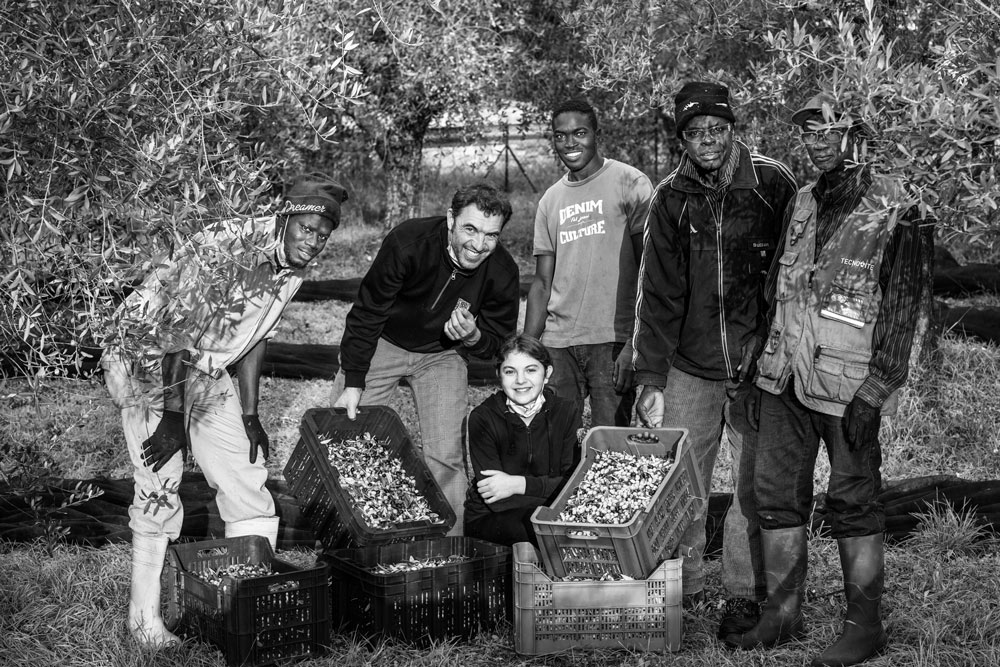
Tjeerd shared a steady stream of details, starting with “Gionni is thrilled with the olives… and beyond exhausted.” During peak harvest time, the mill runs round the clock, and the brothers swap shifts: Gionni works from 8 a.m., when the harvest day starts, past midnight, then sleeps four to five hours on a pullout bed. Paolo covers the second shift, from about 10 p.m. to the early morning.
Running the olive mill (frantoio) and the business is truly a family affair. Gionni oversees the production process while Paolo handles marketing and also fills in at the mill. Their father, Gilberto, is retired but continues to make rounds, while the youngest generation enjoys hanging out with the harvest team and witnessing the olives’ journey from the tree to the mill to the table. Little Lorenzo, Gionni’s 7-year-old son, wears big earmuffs to protect his ears from the whir and din of the equipment as he marches around, monitoring the progress. You can see one of Paolo’s daughters, Elisa, in the groves with the harvesters and her papa above.
This season, Gionni explained, they installed a new disc crusher with a differently shaped grid that helps maximize the aroma in the resulting oil. (Olive crushers are of three varieties—knife, hammer, or disc—each with particular attributes.) The team also shortened the pipe that transports the olive paste, keeping it cooler and further optimizing the aroma and flavors in the final product.
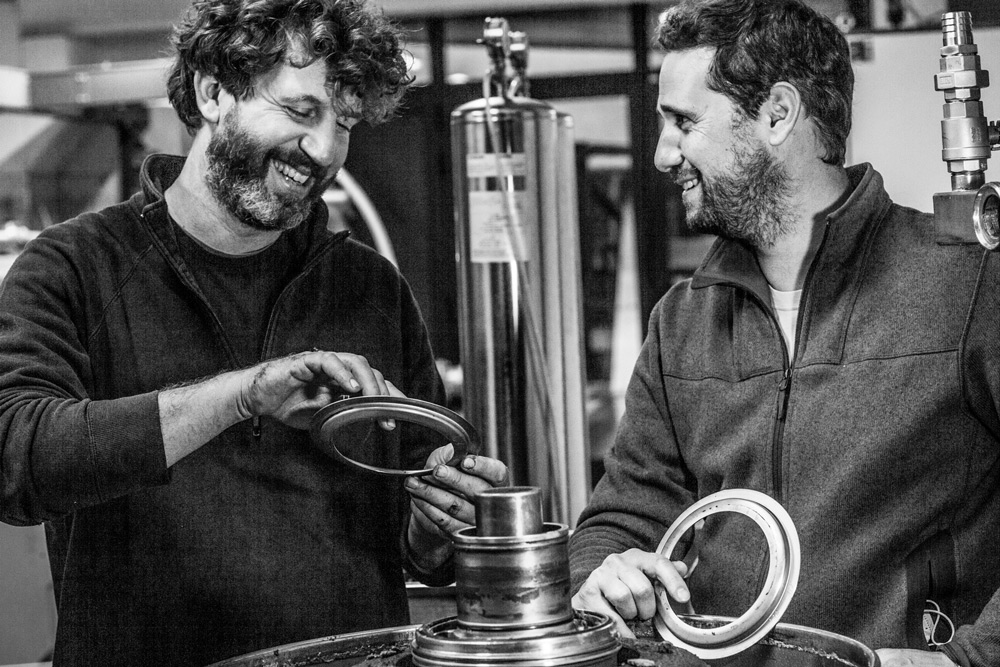
Gionni and Duccio share a history going back to 2006. They met while working for Alfa Laval, the renowned manufacturer of world-class olive-milling equipment, and both are master millers, the highest level of expertise in olive oil production. As longtime colleagues and friends, it was meaningful to them both to collaborate on this exclusive, quintessentially Tuscan-style blend for our Club.
Gionni experienced a moment of confronto (reckoning) as Duccio reminded him how receptive the Club would be to a bold, robust oil: his eyes lit up and he got a big smile on his face. The two olive oil geniuses put their (curly) heads together, “channeling T. J.,” as they put it, and arrived at a gorgeous blend that embodies the finest qualities of Tuscan olive oil: it’s bold, dazzling, harmonious, and exceedingly food friendly.
Paolo and Gionni asked that I extend their congratulations to the Club for helping educate Americans about high-quality extra virgin olive oil. From Tuscany, in the form of the shimmering bottle of liquid gold you hold in your hands, they send their very warmest “Saluti” and “Grazie!”
Impressions and Recommended Food Pairings
In the past, I have referred to a robust Pruneti blend as “Tuscany in a bottle,” and the description is still apt. The nose is dominated by the scents of almonds, green bananas and apples, vanilla, fresh oregano, fennel, and wheatgrass with white pepper for spiciness and marzipan (almond paste) for a touch of sweetness. So substantial, it’s almost chewy in the mouth, reprising almonds along with wild greens, black kale, nasturtiums, sage, and the assertive spiciness of mixed peppercorns. Pulls no punches, but was described by one of my tasters as “a joy ride on the palate.” Indeed.
Olive Oil and Health
Adapted from an article in Science Codex, November 9, 2020
Lifestyle habits including adherence to the Mediterranean diet, getting regular exercise, and not smoking can reduce the risk of death, even for people taking multiple medications, according to preliminary research presented at the American Heart Association’s Scientific Sessions 2020. The meeting, held virtually, Friday, November 13 – Tuesday, November 17, 2020, was a premier global exchange of the latest scientific advancements, research and evidence-based clinical practice updates in cardiovascular science for health care worldwide.
“We’ve long known about the benefits of leading a healthy lifestyle. The results from our study underscore the importance of each person’s ability to improve their health through lifestyle changes even if they are dealing with multiple health issues and taking multiple prescription medications,” said lead author Neil Kelly, Ph.D., a medical student at Weill Cornell Medicine of Cornell University in New York City.
The study analyzed data from more than 20,000 participants of the Reasons for Geographic and Racial Differences in Stroke (REGARDS) study (average age of 64; 56% women). At the start of the study, 17% were taking 10 or more prescription medications, 39% were taking five to nine prescription medicines, and 44% of participants were taking four or fewer prescription medications.
Researchers evaluated the number of medications taken, level of participation in four healthy behaviors and all-cause death rates. The types of medications and the conditions they were used to treat (e.g., heart disease, diabetes, kidney disease, cognitive impairment, etc.), varied widely among study participants. The healthy lifestyle behaviors were physical activity; smoking abstinence; low sedentary time; and following a Mediterranean diet, which emphasizes legumes, fruits, vegetables, whole grains, fish, and olive oil, and moderation for dairy products and wine.
At follow-up roughly 10 years later, the analysis found that a healthy lifestyle decreased the risk of death regardless of the number of medications a person was taking; and the higher the number of healthy lifestyle habits a person had, the lower their risk of death.
“It’s especially important for health care professionals to counsel patients and develop interventions that can maximize healthy lifestyle behaviors, even among patients with several prescription medications,” Kelly added. “It’s important for the public to understand that there is never a bad time to adopt healthy behaviors. These can range from eating a healthier diet to taking a daily walk in their neighborhood. A healthier lifestyle buys more time.”
Reference: Presentation P929, American Heart Association Virtual Scientific Sessions 2020, November 13 -17, 2020.
Kudos from Club Members
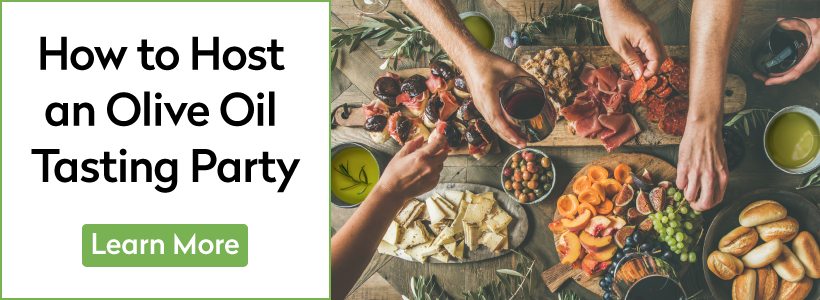
Recipes
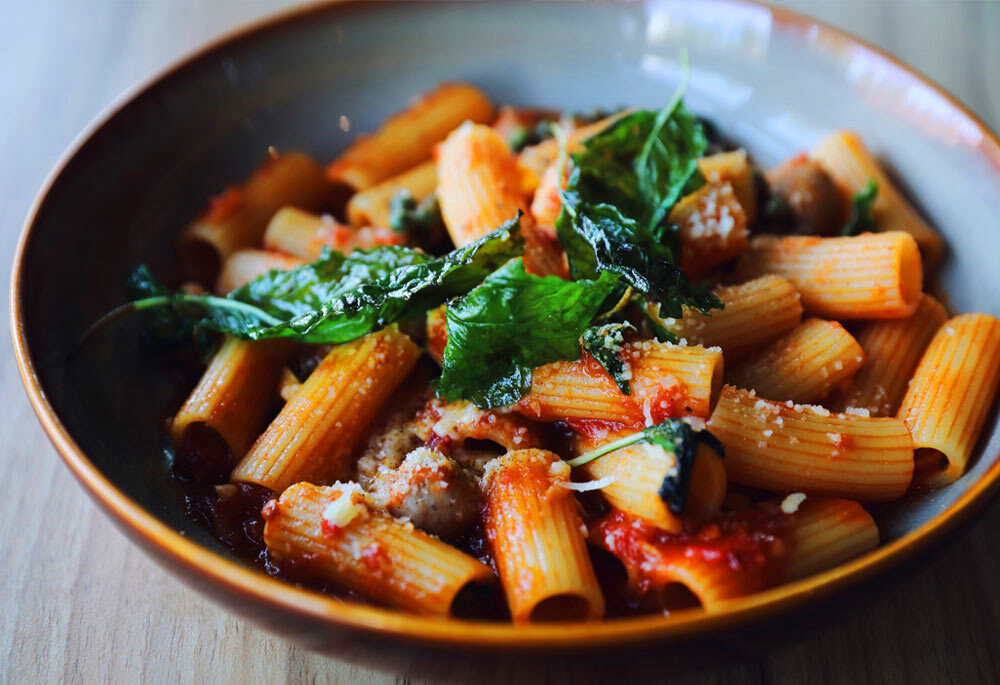 One-Pot Pasta with Sausage and Spinach Hearty, filling, and needing only one pot, this comforting dish will warm a three-dog night. I first cooked with passata (strained uncooked tomato purée) during a visit to Italy, but have since found passata on some upscale American supermarket shelves. view recipe
One-Pot Pasta with Sausage and Spinach Hearty, filling, and needing only one pot, this comforting dish will warm a three-dog night. I first cooked with passata (strained uncooked tomato purée) during a visit to Italy, but have since found passata on some upscale American supermarket shelves. view recipe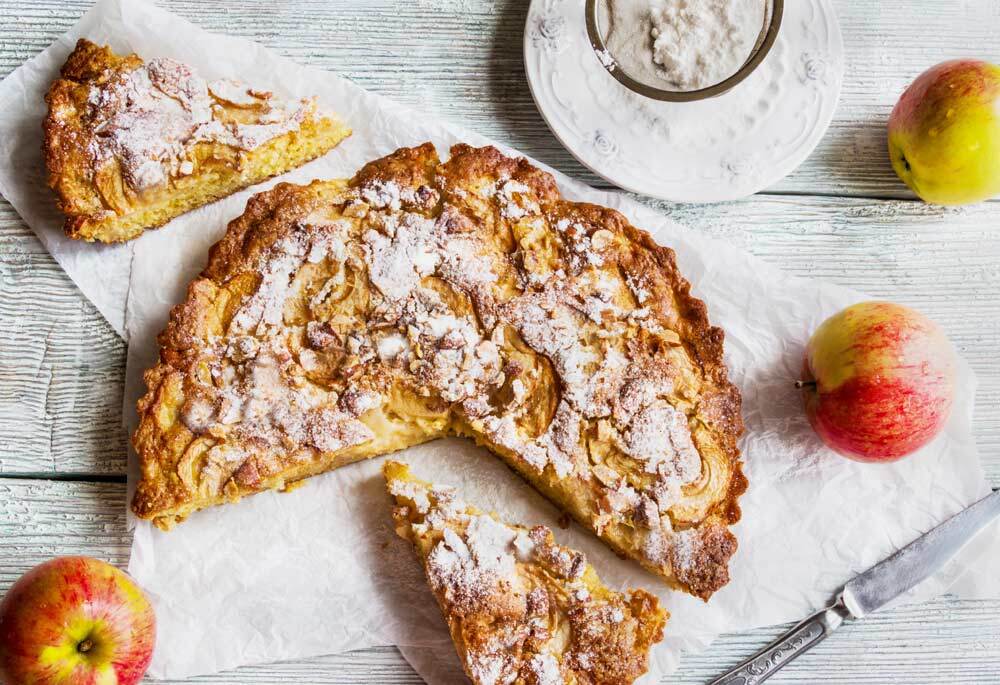 Italian Apple Olive Oil Cake Rustic and moist, this Ligurian cake deserves a place in your olive oil baking repertoire. It will infuse your kitchen with the scents of late fall—apples, cinnamon, and nutmeg. No frosting is required, but we wouldn’t say no to a drizzle of warm honey or a scoop of premium vanilla ice cream. view recipe
Italian Apple Olive Oil Cake Rustic and moist, this Ligurian cake deserves a place in your olive oil baking repertoire. It will infuse your kitchen with the scents of late fall—apples, cinnamon, and nutmeg. No frosting is required, but we wouldn’t say no to a drizzle of warm honey or a scoop of premium vanilla ice cream. view recipe Roasted Brussels Sprouts and Onions with Mushroom Lardons Some of our favorite members of the Brassica family, brussels sprouts, star in this vegan-friendly mélange of seasonal vegetables. Large king oyster or shiitake mushrooms can be found at many supermarkets or Asian food emporiums. Feel free to substitute other meaty mushrooms, such as portobellos or creminis. view recipe
Roasted Brussels Sprouts and Onions with Mushroom Lardons Some of our favorite members of the Brassica family, brussels sprouts, star in this vegan-friendly mélange of seasonal vegetables. Large king oyster or shiitake mushrooms can be found at many supermarkets or Asian food emporiums. Feel free to substitute other meaty mushrooms, such as portobellos or creminis. view recipe Sicilian-Style Grilled Artichokes Longtime friend of the Fresh-Pressed Olive Oil Club, author and TV host Steven Raichlen, shared this recipe from his forthcoming book, How to Grill Vegetables. It pays homage to Italians’ love of grilled artichokes. Here, this delectable botanical (yes, artichokes are technically flowers) are grilled directly in the embers of a wood or charcoal re. view recipe
Sicilian-Style Grilled Artichokes Longtime friend of the Fresh-Pressed Olive Oil Club, author and TV host Steven Raichlen, shared this recipe from his forthcoming book, How to Grill Vegetables. It pays homage to Italians’ love of grilled artichokes. Here, this delectable botanical (yes, artichokes are technically flowers) are grilled directly in the embers of a wood or charcoal re. view recipe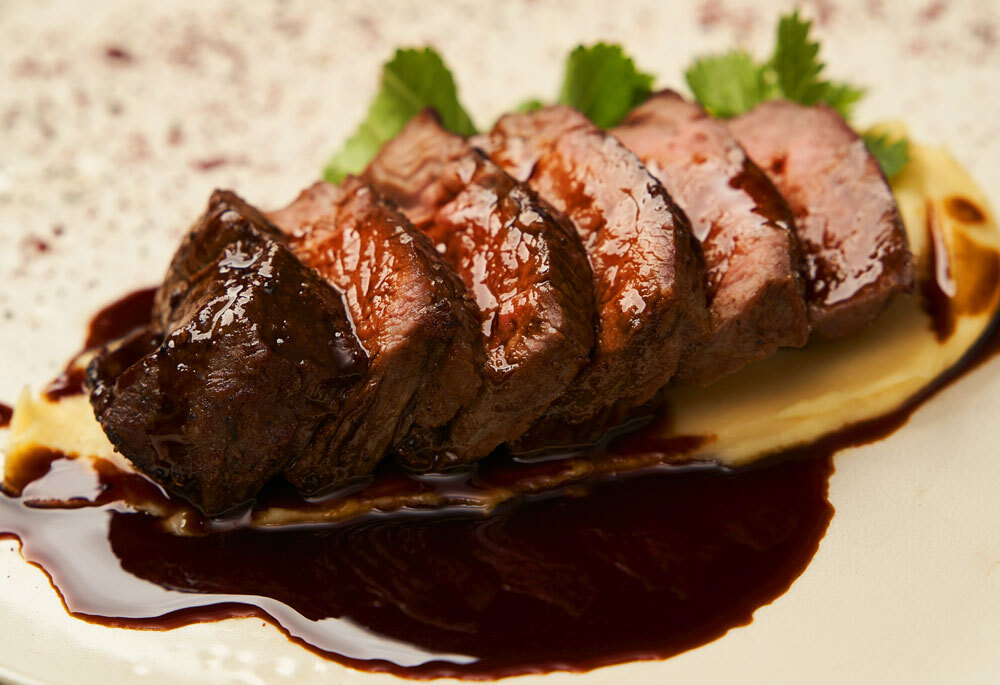 Dry-Rubbed Beef Tenderloin with Red Wine Sauce Nothing says “special occasion” more eloquently than beef tenderloin. To make sure the mild flavor of the meat is front and center, we rub it with a fragrant paste of fresh herbs, garlic, and extra virgin olive oil before ovenroasting. You can even skip the red wine sauce and drizzle the sliced meat with more… view recipe
Dry-Rubbed Beef Tenderloin with Red Wine Sauce Nothing says “special occasion” more eloquently than beef tenderloin. To make sure the mild flavor of the meat is front and center, we rub it with a fragrant paste of fresh herbs, garlic, and extra virgin olive oil before ovenroasting. You can even skip the red wine sauce and drizzle the sliced meat with more… view recipe Maine Downeast Pumpkin Bread Make a double batch of this moist bread, as it freezes well and is great for sharing with family and friends. If you’re a “from scratch” kind of person, you can make your own pumpkin purée from pie pumpkins. view recipe
Maine Downeast Pumpkin Bread Make a double batch of this moist bread, as it freezes well and is great for sharing with family and friends. If you’re a “from scratch” kind of person, you can make your own pumpkin purée from pie pumpkins. view recipe Antipasto Bites For a carb-free version of these colorful, festive skewers, replace the cheese tortellini with cherry tomatoes, marinated mushroom caps, or pepperoncini. view recipe
Antipasto Bites For a carb-free version of these colorful, festive skewers, replace the cheese tortellini with cherry tomatoes, marinated mushroom caps, or pepperoncini. view recipe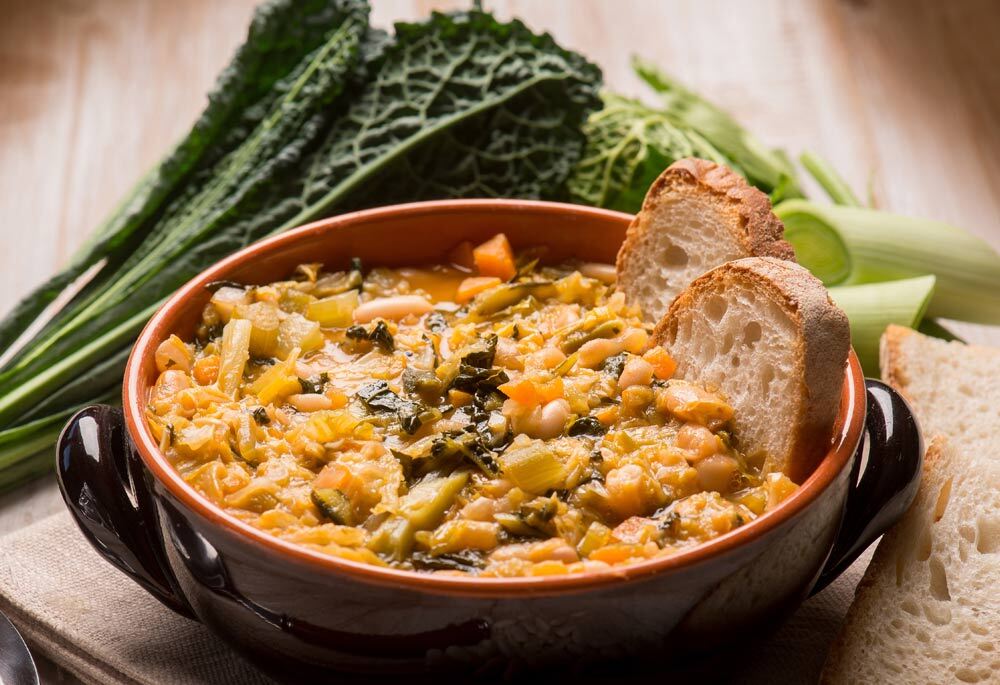 Ribollita In the spirit of cucina povera (poverty cuisine), Italian mothers and grandmothers have repurposed for generations a thick vegetable stew (every family has their own recipe) by submerging bread and cheese in it and reheating. view recipe
Ribollita In the spirit of cucina povera (poverty cuisine), Italian mothers and grandmothers have repurposed for generations a thick vegetable stew (every family has their own recipe) by submerging bread and cheese in it and reheating. view recipe Sweet Potato Soup with Sage Pesto A cornucopia of seasonal flavors comes together in this creamy vegetarian soup. It’s homey, yet you can serve it to the most sophisticated palates in your best china or rustic soup bowls. It gets a double hit of fresh-pressed olive oil, which is used in the vibrant, herbaceous pesto as well as the soup. view recipe
Sweet Potato Soup with Sage Pesto A cornucopia of seasonal flavors comes together in this creamy vegetarian soup. It’s homey, yet you can serve it to the most sophisticated palates in your best china or rustic soup bowls. It gets a double hit of fresh-pressed olive oil, which is used in the vibrant, herbaceous pesto as well as the soup. view recipe Kale Salad with Grana Padano Tuscan kale is sold under several names and might be labeled dinosaur kale, black kale, cavolo nero, or lacinato kale. Grana Padano is an aged cow’s milk cheese from Emilia-Romagna. If you can’t find it, substitute Parmigiano-Reggiano. view recipe
Kale Salad with Grana Padano Tuscan kale is sold under several names and might be labeled dinosaur kale, black kale, cavolo nero, or lacinato kale. Grana Padano is an aged cow’s milk cheese from Emilia-Romagna. If you can’t find it, substitute Parmigiano-Reggiano. view recipe
